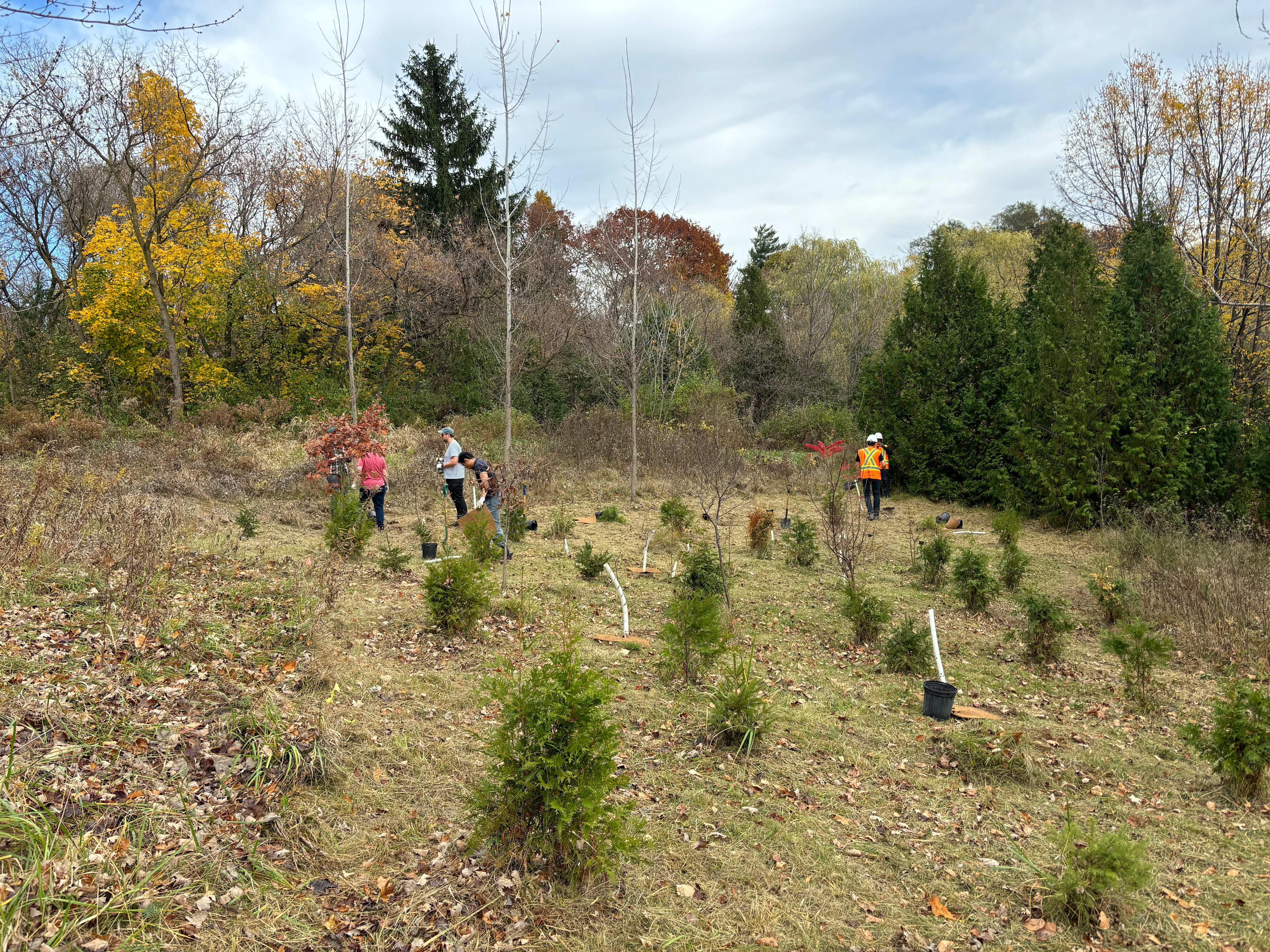Share
Metrolinx Vegetation Guideline undergoes 2025 update
Guideline enhanced following engagement with Indigenous communities.
Apr 22, 2025
Marked by rallies in North America, the very first Earth Day was observed by Western culture on April 22, 1970. This day has value to many in diverse ways. Indigenous worldviews are strongly aligned with the intent and message of Earth Day, which promotes the importance of environmental sustainability and stewardship.
Today, Earth Day continues to be one of the most important days for the wider environmental movement. It has gained global momentum, with ongoing efforts to better protect the environment and build a more sustainable future.
Metrolinx is highly attuned to the importance of environmental sustainability. As we carry out the largest transit expansion in the history of the region, we look to reduce greenhouse gas emissions by developing and operating sustainable transit options. While vegetation must sometimes be removed as part of ongoing work to expand GO service and build new rapid transit lines and subways, Metrolinx makes sure to minimize vegetation removals as much as possible.
Disrupting vegetation is a last resort, according to Jennifer Smith, Manager of Restoration at Metrolinx. In 2020, the environmental team at Metrolinx developed and launched the Vegetation Guideline. The guideline provides an approach for managing vegetation at Metrolinx project sites, including the removal and replacement of trees based on the size, species, and location of the tree being removed. It ensures many more trees are planted than removed as we work to expand transit.
Tree planting near the Eglinton Crosstown West Extension project. (Metrolinx photo)
Since the last update three years ago, the guideline was refreshed for 2025 to make it both more straightforward and robust, following engagement with Indigenous communities. The most significant changes include additional detail about Metrolinx’s vegetation and restoration program, vegetation re-use, invasive species management and the evaluation of removals, so that every possible effort is made to avoid removing vegetation.
“Environmental disruption is absolutely a last resort. There really is an effort to avoid that. But of course, there are trees that must be removed to make way for new and expanded transit services. In those cases where we have to remove trees, we look to restore them in another location as close to the removal site as possible,” Jennifer said.
She provided an example of the work Metrolinx is doing along the Barrie GO Line, which her team has been heavily engaged in.
“In order to enable two-way all-day service along the Barrie rail corridor, we have had to remove a significant number of trees to make room for a second track,” she said. “Within the rail corridor, there’s limited room to replant the trees. Ideally, replantings take place in close proximity to or within the same watershed as the removals so ecosystem services and habitats lost are returned as close to impacted lands as possible. For these impacts on the Barrie rail corridor, we will see up to 50 trees replanted for every tree removed.”
Jennifer says that with this year’s Vegetation Guideline update, Metrolinx has worked to include Indigenous community input. Engagement with Indigenous communities on the Metrolinx Vegetation Guideline is a step towards improving working relationships with Indigenous communities. “It was clear that we needed to engage Indigenous communities on the Vegetation Guideline. It’s important for reconciliation. It’s important for ecological restoration and the communities and lands we impact,” Jennifer explained.
While not Indigenous herself, an example she heard from Indigenous communities is the longer-term thinking of the Seven Generation Principle, an Indigenous philosophy that suggests decisions today should include stewardship of the Earth and selfless sustainability far into the future. Jennifer explained the benefits of being more holistic in Metrolinx’s restoration planning process and work, saying it has led us, for example, to increasing the duration of restoration monitoring to ensure restored ecosystems are thriving.
The process that she’s describing, from posing the question of whether environmental disruption can be avoided entirely, to engaging with Indigenous communities and replacing impacted trees and habitats, all represent the different ways the Vegetation Guideline improves the way we deliver transit. All of this is leading to meaningful environmental results.
Since 2020, Metrolinx has planted more than 36,000 trees and 61,000 shrubs, and is expecting to plant approximately 140,000 more. Metrolinx has worked, and continues to work, closely with groups like the Toronto and Region Conservation Authority to restore habitats throughout the Greater Toronto Area. More than 3,000 native trees and shrubs have been provided to local residents through ‘community tree give-aways’. And all plants have been sourced from local, native plant nurseries including Kayanase Greenhouse, an Indigenous-owned business associated with Six Nations of the Grand River.
For some organizations, Earth Day initiatives only happen on April 22. But at Metrolinx, our sustainability efforts take place year-round, because the work we do to improve transit is continuous.
Learn more about our updated Vegetation Guideline.
by Stephanie Hinds Senior Social Content Specialist
